Lancewood
Nectandra coriacea (Ocotea coriacea)
Lauraceae
Today John and George were not just taking an idle nature stroll. We scouted images for our upcoming refurbished online course on Native Plants, visiting two neighboring hammocks near Stuart: Twin Rivers Park and Rocky Point Hammock Park. Species diversity makes those two small refuges living plant museums. Lancewood perfumed the air from its small white flowers asking to be today’s featured species. Or at least to lead the parade.
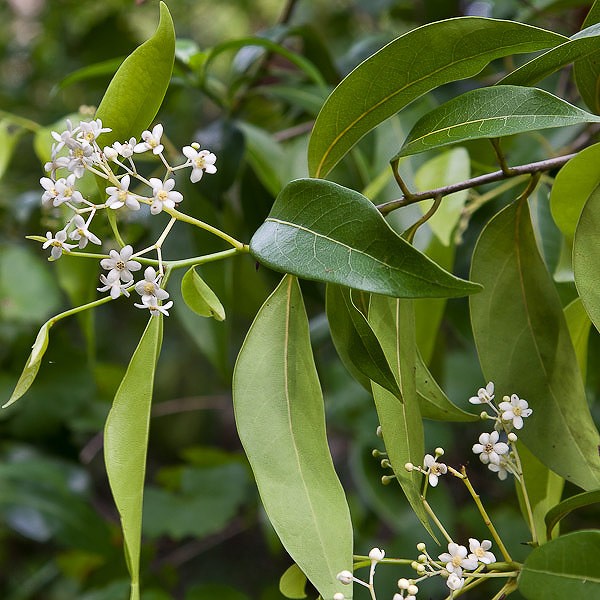
Lancewood blossoms. (Today’s photos mostly by John Bradford, although some of the red and black photos below are from our older collections and who took what is forgotten.)
Lancewood is a small tree or shrub in the Cinnamon Family, resembling its disease-suffering cousin Red Bay (Persea borbonia). Red Bay leaves are grayish and usually hairy (or not) beneath instead of green and hairless, and Red Bay foliage stinks nasty when crushed as opposed to a gentle fragrance from smashed Lancewood. Lancewood ranges from South Florida down through the Caribbean Basin. Because I occasionally make primitive archery equipment, or used to, it interested me although perhaps not you, that prehistoric Floridians carved archery bows from the wood. Few species are good for that.
What Lancewood brought to mind today, although too early for fruits, was its blackish fruit sitting like a tiny golfball on a reddish tee. This is one of many examples of a pervasive theme in the plant world—fruits and seeds distributed by birds often are compositions in red and black. The colors can be on different organs depending on the species: variably on fruits, on stalks, or on seeds. For instance, in pokeweed the berries are black fruits on red stalks. CLICK Flowers pollinated by birds are often red too, but this is fruit day.
The world is too full of red-black birdophilic combos to go crazy listing them. A quick search through our dusty photo collections turned up enough examples to make the point based on local wild species. If the search were expanded to garden species or to species in other regions we’d be at it all day. Some pleasing Google-able examples beyond the scope of here and now include the fruits/seeds of some Clerodendrums, Ochna, and Peonies.
Now please enjoy a little black and red:
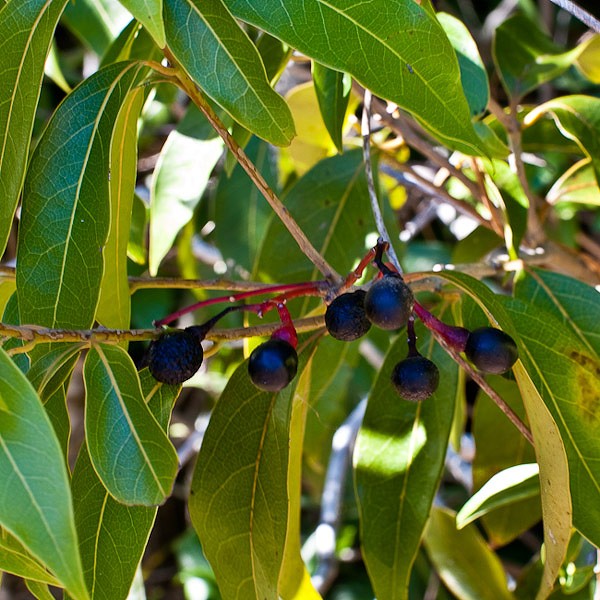
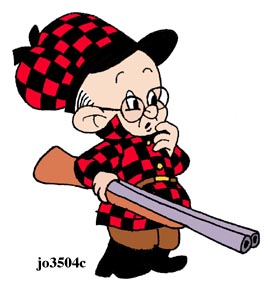
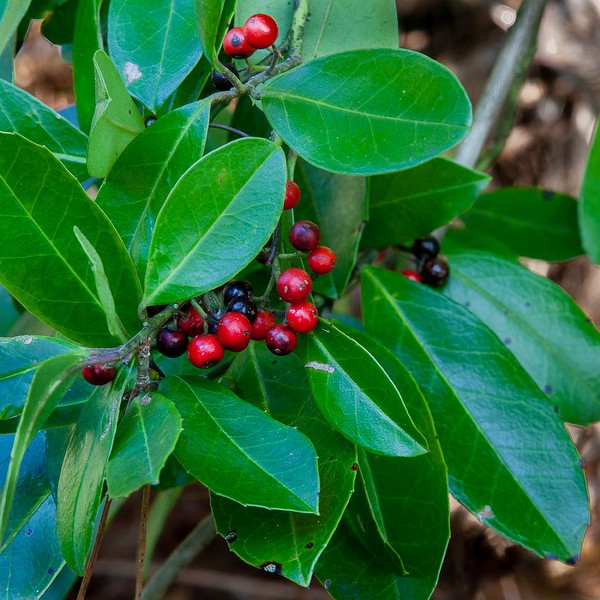
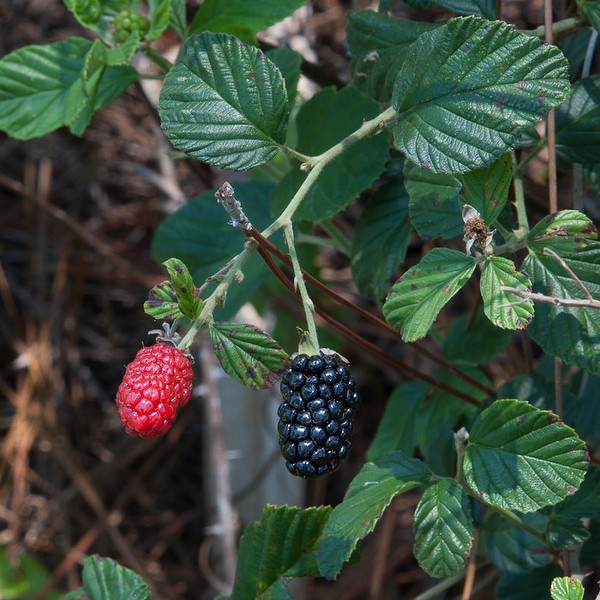
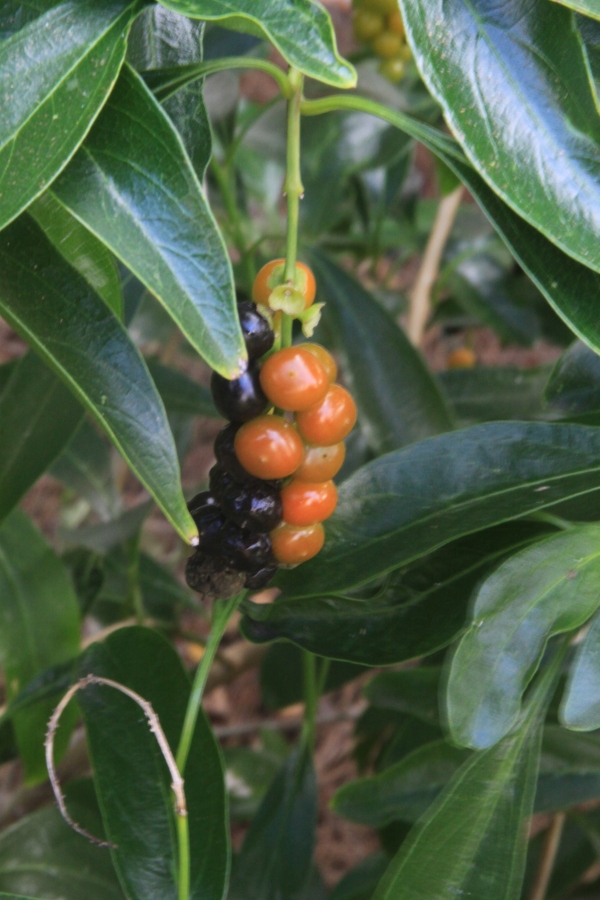
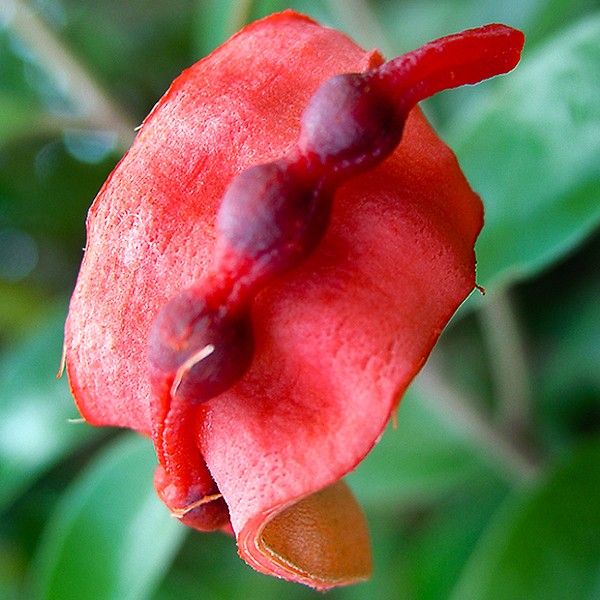
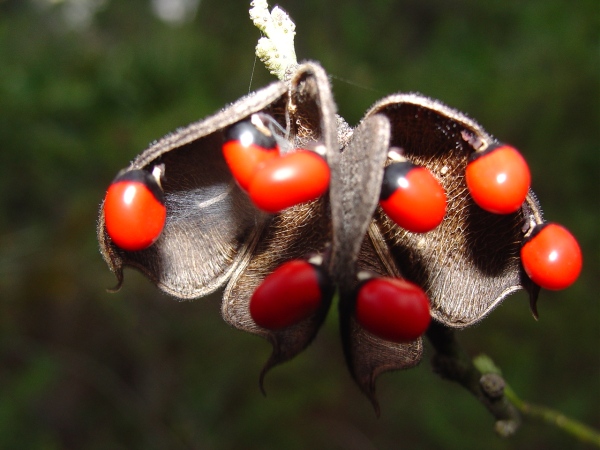
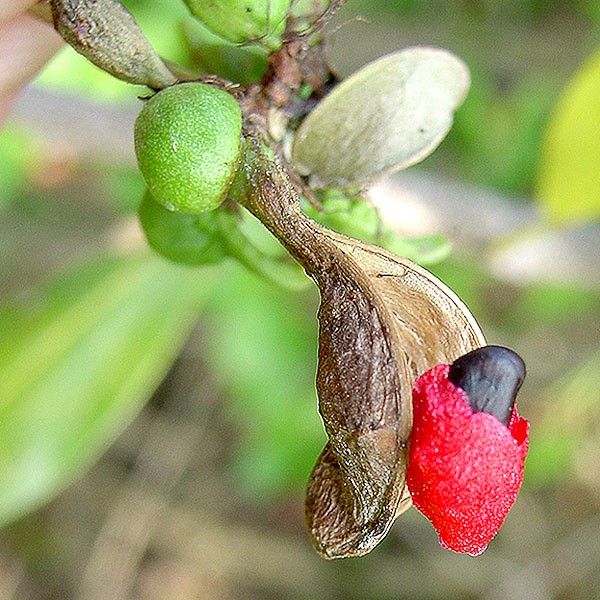
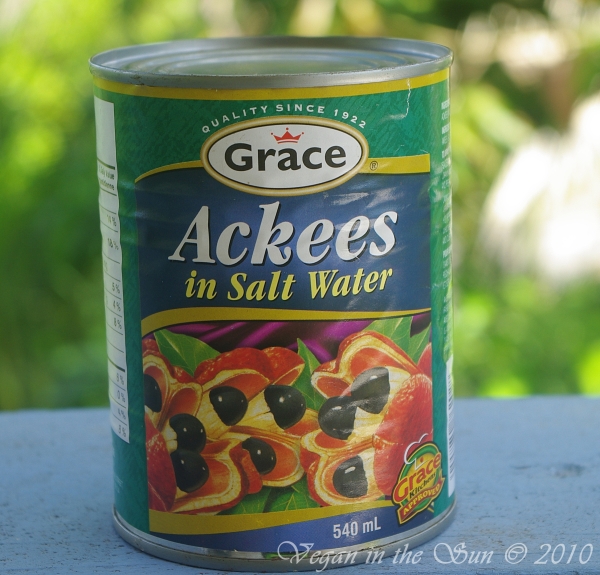
Suellen Granberry-Hager
May 30, 2014 at 10:38 pm
Now I’m intrigued. I will be looking for red and black seeds and for red flowers and will be checking to find out if the flowers are pollinated by birds and if the seeds are eaten by them. Do you know why birds go for red and black?
George Rogers
May 31, 2014 at 8:31 am
Hi Suellen, The party line is that bees see UV but can’t see red. So that prompts a little niche specialization by flower-oriented birds, at least pollinators, into the red zone. Maybe that has something to do with it, although so many more birds eat fruits and seeds than pollinate of course.
Uncle Tree
May 31, 2014 at 6:26 am
Another interesting and educational post, George.
Can’t say I’m familiar with a single one of the above.
Best to leave out the why’s, methinks.
Mother Nature sticks with that which is effective.
She doesn’t have time to care why (“Because I said so!”)
Fathers like red and black and war and nothingness.
We don’t ask why the bull’s eye is red,
nor why we stray from black-eyed peas.
Making sense doesn’t make sense, since She left us for no good reason.
Early morning gibberish on a stick to break the fast. 🙂 “Go Elmer!”
George Rogers
May 31, 2014 at 8:36 am
Hello Uncle Tree, Well, if you pretended to know those plants you’d be labeled a big red and black phony. John and I have been trying for a decade and we still don’t know them all at all. Weird thing about Florida is,a hundred-mile change in latitude presents a whole different set of plants anyhow. Sure do agree that Mother N is authoritarian. And thanks for the breakfast food for thought.
theshrubqueen
May 31, 2014 at 12:20 pm
As a graduate of the University of Georgia, I love Red and Black!! Thanks for the botanical insight.
Can I sign up for the online natives course?
George Rogers
May 31, 2014 at 4:08 pm
Good point!! How’s I commit that grave omission!? The course refurbishment will be done hopefully by the end of the summer—and we’re going to open it up to anybody interested, either at no cost or a nominal fee ($20?) to help pay the website fee. The course is Palm Beach State College ORH2511, Florida Plants in Their Native Ecosystems. The course is about 14 years old, with an on-line version added along the way. It was on a restricted PBSC website limited to students matriculated at PBSC, but as part of the refurbishment we are going to put most of it on an outside website in a more user-friendly fashion. There’s no plan of using the class as a money-maker, not a penny in our pockets, merely to continue our fun with native plants, BS, and photos. The bulk of the material already exists; we’re just changing the format, rearranging, making some adjustments, moving to the public access, and upgrading the images. Check in around late August and we might be ready.
theshrubqueen
June 1, 2014 at 9:35 am
Fantastic! I am an old LA with a lot of Interiorscape experience so I am learning the SoFla plant material from the inside to outside and am very psyched to learn about the natives!
George Rogers
June 1, 2014 at 11:51 am
Perfect–you can be our first guinea pig.
theshrubqueen
June 1, 2014 at 2:53 pm
Guinea pig? yes, let me know if you need something tested -I am kind of a plant geek, is there anything else online in regards to SoFla plant material? I am really interested in the landscape Bromeliads.
George Rogers
June 1, 2014 at 4:54 pm
I’m not aware of anything, but that’s par for the course.
LRN
June 4, 2014 at 3:53 pm
Please let us know when the online course is available!
For other sites, have you seen this one?
Natives for your Neighborhood from IRC
http://regionalconservation.org/beta/nfyn/default.asp
George Rogers
June 4, 2014 at 4:38 pm
Yes, and yes. When the course is ready to go we’re going to do all we can to round up victims, err, ahh, I mean wild plant enthusiasts. And yes, I visit the IRC site as a valuable resource. Thank you for mentioning it—no doubt the link will benefit some readers.
Rick Schnellmann
August 6, 2014 at 2:19 am
Please let us know when the course is ready to go. Always looking to learn more about Florida natives.
George Rogers
August 6, 2014 at 7:42 am
The class is ready and begins 9/1/14. Will send you a flier.